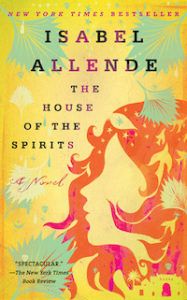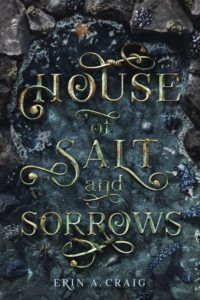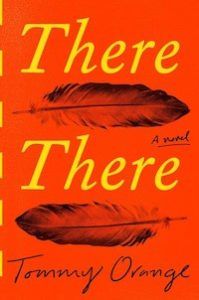
Over the Bay Bridge: Haunted Oakland Spots Perfect for Graphic Novels
Oakland is a city that has reinvented itself in the last decade or so, which I would never have known but for the lucky fact that both my sister-in-law and my BFF live there (around the corner from each other, as it happens). By virtue of that coincidence, I’ve spent a fair bit of time there in the last bunch of years and I absolutely adore a lot of the qualities it shares with Pittsburgh: a city with a town’s feel, food options from every corner of the world, a concerted effort to reinvest in community, the option to shop local (in most cases), and really amazing bakeries (some of my needs are very simple). And with the added benefit of public transportation that isn’t fatal on a regular basis.
It is also very haunted, and Oakland’s spooky stories may be some of the best ones I’ve found yet grace the pages of graphic novels.
Mills College (5000 MacArthur Blvd., Oakland)
Mills College, located in the East Hills, is 165 years old and has a reputation for hosting students in perpetuity; at least five different buildings on campus have are said to be haunted. Don’t blink if you see a woman in a lovely Victorian dress on the steps of Orchard-Meadow Hall; she won’t be there if you take a second look. Heels pace the stage in Lisser Hall but if you run upstairs from the workshop to see who’s making the ruckus, you’ll find the stage empty. You may see a carriage pulled by rotting horses speed down a hill and crash before disappearing near the Mary Morrse and Ethel Moore residence halls. One of the dorm libraries has a permanent resident, but the good news is if you fall asleep at a study carroll, she might finish your math homework for you (I wish my dorm had been thus inhabited).
According to people who have spent time on the Mills campus, none of the spirits seem particularly malicious. Because Mills has always been home to a predominantly female student body, all of the spirits, with the possible exception of Lisser Hall’s*, are women.
Which may be why they’re so civilized.
*There’s a debate among believers as to whether the Lisser Hall ghost is that of Louis Lisser or Susan Mills. If it is Lisser, he would be the lone male haunt on the property.
 Creative Team: Isabel Allende and Mildred Howard
Creative Team: Isabel Allende and Mildred Howard
While Isabel Allende is known as a novelist rather than a comics author, her lush magical realism would suit this world of women and their stories so beautifully I couldn’t help but choose her to regale us with the tales of longing beauties, tragic last rides, and banished starlets so reminiscent of the residents of The House of the Spirits. Mildred Howard is a sculptor and mixed media artist who resides in the Bay Area, and some of her collages—including Spirit and Matter, Cassnova: Style, Swagger, and the Embracement of the other I, and Volume I&II: The History of The United States with a Few Missing Parts—are both solid and ethereal, delicate and harsh, of the world and of the spirit. Only they could capture the soul of a place that has been and continues to be while the past peers around the edges.
Intersection of 16th and Castro (Oakland)
Residents inhabiting the trio of original Victorians remaining at the aforementioned intersection reported strange happenings on their respective properties in the 1990s; what’s most interesting about those reports is that the neighbors never spoke to one another about the spirits crawling onto beds, roaming the neighborhood, or the possessed cat, and so the modern incidents weren’t connected until the San Francisco Chronicle wrote a story on the creepy business at the intersection of 16th and Castro.
As it turns out, the three homes overlook the same patch of Interstate 980, a patch that was once occupied by the Clarke Mansion, famous host of a haunting of its own in 1874. The mansion was torn down in the 1970s to make room for I-980’s eastbound lanes. The Victorians, however, have been standing sentinel since before the original incident.
According to the Chronicle: On April 24, 1874, just after midnight, someone rang the bell at the mansion being rented by Thomas Clarke. Clarke and two of his borders armed themselves and went to check out the commotion, only to be greeted with additional thumping and crashing. Chairs and tables began moving around the parlor of their own accord and the piano played itself while the wood warped and bent. On the second night, a mahogany bureau and sofas spun in the air and slammed into walls while making buzz-saw noises. A 20 pound basket of silverware exploded, a pair of gloves were donned by invisible hands, and the front door blew off its hinges.
On April 26, the third and final night of the haunting, the house filled with bright light, rooms disappeared, and the apparition of a woman appeared, let loose a demonic howl, and then vanished.
There was significant debate in the press about the legitimacy of the reports, which culminated in Clarke writing a 23 page pamphlet called “The Oakland Ghost” in defense of his claims. When he died his daughter took up the cause, but after an 1891 letter to a “psychic study group” she, and any record of the Clarke family, disappears from historical record.
No one is sure if the modern hauntings are due to whatever possessed the house in 1874 or to Clarke, who died humiliated and disgraced.
 Creative Team: R. Erin Craig and Kazuuo Umezu
Creative Team: R. Erin Craig and Kazuuo Umezu
In R. Erin Craig’s House of Salt and Sorrow, an exquisite retelling of “The Twelve Dancing Princesses,” Highmoor, the house in which Annaleigh and her doomed sisters live, is as much a living, breathing character as the sisters themselves, looming as large as the gods and curses seeking their pound of flesh and pint of blood. Just as the Clarke Mansion came to own its inhabitants, Highmoor claims the lives and souls of those who live within and having done justice to one, I have no doubt Craig can do justice to the other. Kazuuo Umezu is both an author and artist of horror manga whose art merges the innocent and the creepy in a way that raises the hair on the back of the reader’s neck—exactly the sensation you want when reading about haunted houses and curses.
The Bordello (East 12th Street, Oakland)
Built as a private home in 1887, the Bordello later became, well, a bordello (and saloon). If you’re a fan of “friskier” spirits, this is the place for your supernatural foray. Furniture moves on its own and legend has it sailors who died on property in bar fights will come out to chat, using flashlights to answer yes and no questions. The shades of both men and women have been spotted, though exactly what they’re doing isn’t specified. They’re said to be friendly, though, especially if you play old jazz records for them.
The property was right on the water until the 880 was built which means its warren of shotgun stairwells and hidden rooms were likely used, at least in part, to kidnap sailors too drunk or otherwise intoxicated to defend themselves (“shanghaiing” in the common parlance of the time) and press-ganged into service on a ship different from that upon which they had arrived. It’s possible, and even likely, that some of those sailors died while being dragged through hallways and tunnels and up and down stairways, and decided to hang around to have the fun denied them in life.
The building was used as an underground music venue as late as the 1990s but has since been closed.
 Creative Team: Tommy Orange and Gay Outlaw
Creative Team: Tommy Orange and Gay Outlaw
Tommy Orange was born in Oakland and his first book, There There, which focuses on themes of First Nations citizens living in urban California, was a 2019 Pulitzer finalist. Orange himself is a member of the Cheyenne and Arapaho tribes. The perspective of First Nations people is one missing from history, and to tell a tale of Oakland from that perspective can only serve to expand all of our horizons. Outlaw is a sculptor, photographer, and printmaker based in San Francisco whose bright colors and skewed perspectives would suit a new and different historical perspective.
Are we still having fun? I know I am. It’s a big country and there’s so much more to explore. Next up: I think I’ll see what I can find in Bozeman, Montana.














